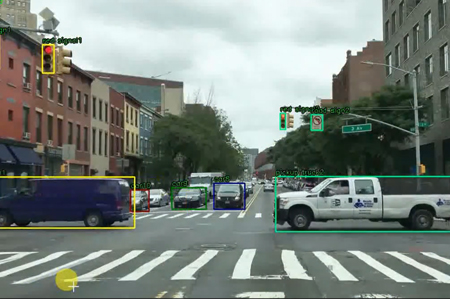Your personal data shared with us through this form will only be used for the intended purpose. The data will be protected and will not be shared with any third party.
Your personal data shared with us through this form will only be used for the intended purpose. The data will be protected and will not be shared with any third party.
Introduction
Autonomous vehicles’ (AVs) advancement is largely based on machine learning algorithms, which need a large number of labelled data for training and model evaluation. The data existing in such applications need to be annotated, and these annotation services help facilitate in the preparation of such files so that AV systems can detect and interact appropriately with these objects, environment, and situations. This paper aims to want to highlight what annotation services are, the difficulties encountered when performing annotation services, and the approaches taken in conducting annotation services of an autonomous vehicle project.

Background
A leading AV technology company, decided to improve the perception of its self-driving car. The project included crawling and annotating large scale data set of images, videos and sensor data from real world driving. The intent was to enhance the car’s perception for pedestrians, signs, other cars, obstacles as well as lanes under various lighting and weather conditions.
Objectives
1. Data Collection: Collection of various datasets from different zones including urban, suburban, and rural zones.
2. Data Annotation: Dissect the collected data and differentiate between different classes in order to feed the algorithms in a more convenient manner.
3. Quality Assurance: Automate instance selection in order to produce fewer mistakes during the model training.
4. Scalability: Coordinate a large scale of annotation system as the project moves forward with an ample amount of data collected.
Annotation Process
Data Acquisition
To collect the information, the client sent a number of test cars with cameras and sensors to record the activities a multisensory way. This included different weather conditions, times of day and place and, complex urban environment scenarios which gives a broad training set.
Annotation Methodologies
The client engaged our services for several annotation tasks, including:
Quality Control
To ensure accuracy, we have implemented a multi-tier quality control process:
Challenges Faced
1.Data Volume: One of the main problems associated with such a large set of data was the time needed to process and annotate the materials.
2.Complex Scenarios: Blind annotating of images with different lighting conditions, different types of weather, and moving objects were challenging.
3.Scalability: As the number of annotators grew the issue of variability in annotations across the annotators remained an important one.
Solutions Implemented
1.Outsourcing: The client agreed to work with us with a view of sharing the workload and working with our specialists in automotive datasets.
2.Annotation Tools: To address this question the company acquired annotation tools that come with professional interfaces and enhance productivity over annotations with ease and in real-time.
3.Training Programs: To assist annotators in avoiding such errors and to familiarize them with the specifics of AV innovation and most recent norms, training sessions were scheduled on a regular basis.
Results
Several benefits of adequate annotation services were achieved with the help of carrying out improvements in this area.
Improved Model Accuracy: Evaluation of annotated data also improved the operational performance of the machine learning models increasing the object detection accuracy by 20%.
Conclusion
No one can deny the importance of annotation services in the building of self-driving cars. The client addressed such issues through a combination of strategic partnerships, sound methodologies, and quality control goals and objectives. The working enhanced perception capabilities of the vehicle while also serving as a measuring stick for future AV projects It re-established the importance of having high quality and better labelled data as one of the major factors in going after fully autonomy solutions.
Any Questions? Contact / Call / Email Us Right Away!
Get in touch